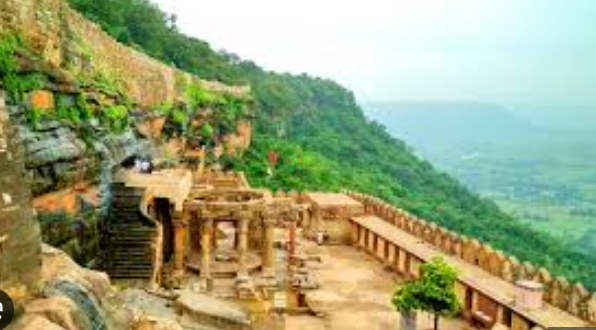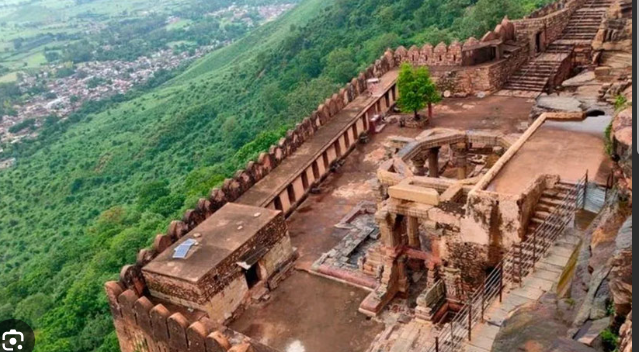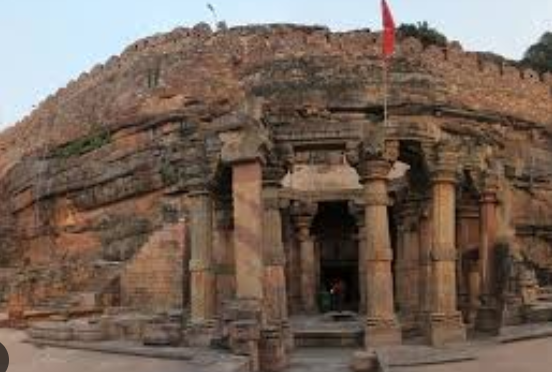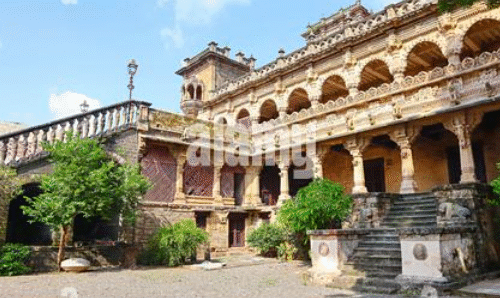Kalinjar Fort stands tall as a magnificent symbol of India’s eternal resilience, spiritual depth, and architectural brilliance. Located in the Banda district of Uttar Pradesh, this ancient hilltop fortress has silently watched over centuries of battles, empires, and cultural evolution. With a commanding presence that combines beauty with strategy, Kalinjar Fort invites history lovers, spiritual seekers, scholars, and travelers to experience a remarkable journey into India’s past.
This mighty fort isn’t just a structure—it’s a living museum. From its majestic gates to its sacred temples, from war-torn ramparts to silent chambers, every stone at Kalinjar tells a story of valor, devotion, and legacy. Here’s an in-depth look at what makes Kalinjar Fort one of India’s most treasured historical gems.
History of Kalinjar Fort
Kalinjar Fort boasts a history that spans over 1,500 years. It is not just a monument of stone and walls but a repository of stories, legends, and power struggles. The fort’s name—Kalinjar—derives from the Sanskrit words “Kaal” (time) and “Jar” (destroyer), a reference to the legend in which Lord Shiva defeated death at this site, earning it immense spiritual importance.

The fort gained prominence under the rule of the Chandela dynasty in the 10th and 11th centuries. The Chandelas, known for their architectural patronage (also seen at nearby Khajuraho), transformed Kalinjar into both a military stronghold and a religious sanctuary. They fortified the structure, built shrines, and embedded a deep cultural identity into its stone walls.
Throughout history, many powerful invaders sought to capture Kalinjar. In 1023 AD, Mahmud of Ghazni tried and failed. Later, in 1531, Babur, the founder of the Mughal Empire in India, launched a fierce campaign and ultimately took the fort after a bloody siege. His victory marked the beginning of Mughal control.
In the 18th century, the Marathas took over the fort before it eventually fell into British hands in 1812. Kalinjar played a role in the 1857 revolt—the First War of Indian Independence—and after that, it was retired from military use and preserved as a historical monument.
Location of Kalinjar Fort
Strategically perched in the Vindhya mountain range, Kalinjar Fort rises about 1,200 feet above sea level. This elevation once offered a sweeping vantage point for ancient defenders, allowing them to detect enemy advances from miles away. Today, it provides panoramic views of the surrounding plains, making the site as scenic as it is historic.
The fort is located approximately 130 kilometers from Khajuraho and about 280 kilometers from Kanpur. Atarra is the nearest town with a railway station. From Atarra, visitors can hire taxis or take buses to reach the fort. The journey winds through rugged terrain and sparse landscapes, preparing travelers for the majestic presence of Kalinjar that awaits them.
In ancient times, this location was chosen for both its natural defensibility and proximity to trade routes and spiritual centers. The fort connected key regions across northern and central India, which made it a valuable asset for any ruler.
The best time to explore Kalinjar is between October and March. During these months, the weather is pleasant, and walking through the sprawling fort complex becomes a comfortable and enjoyable experience.
Design of Kalinjar Forts
The design of Kalinjar Fort reflects a fusion of engineering genius and ancient aesthetics. Builders utilized the hill’s natural shape to reduce construction challenges while enhancing defensive advantages. The thick stone walls, strong bastions, and well-planned pathways show a deep understanding of medieval warfare and architecture.
The fort features seven prominent gateways, each crafted to serve as a defensive checkpoint. These include Alamgir Darwaza, Ganesh Dwar, Chandi Darwaza, Budhabhadra Darwaza, Hanuman Dwar, Rewa Dwar, and Lal Darwaza. These gates, made with stone, iron, and wood, are not only structurally sound but also display intricate carvings that hint at the cultural richness of their time.
Within the fort, there are reservoirs, stepwells, and temples designed to sustain the population during sieges. Large underground water tanks ensured a steady water supply. Hidden chambers and secret escape tunnels offered safety and routes for surprise attacks. These thoughtful features show that Kalinjar was more than just a fort—it was a self-sufficient city built to endure.
Every corner of the design reflects balance—between strength and spirituality, between function and beauty.

Architecture of Kalinjar Fort
The architecture of Kalinjar Fort is a harmonious blend of various cultural influences, shaped by centuries of Hindu, Islamic, and British control. The Chandelas infused the fort with temple architecture marked by ornate carvings, stone pillars, and detailed sculptures, many of which remain intact today.
The Neelkanth Temple is the crown jewel of the fort’s spiritual heritage. Built partially inside a cave, this temple honors Lord Shiva. Its massive black stone Shivalinga and the natural water drip from the cave ceiling create a divine atmosphere. Devotees still visit Neelkanth to pray, making it a rare living temple within a historic fort.
Islamic rulers left their mark through the construction of simple, functional mosques and arched gateways featuring Quranic inscriptions. These structures added another layer of cultural identity to the fort.
Later, the British built armories, quarters, and administration blocks. Although many of these are in ruins, they serve as reminders of the fort’s colonial past.
Kalinjar Fort is not just a fortress—it’s a timeline of Indian architecture, showcasing evolving styles and materials across centuries.
Bithoor Fort – A Symbol of History and Courage
Importance of Kalinjar Fort
Kalinjar Fort holds immense importance in Indian history and culture. Spiritually, it is considered a holy site where Lord Shiva consumed poison to protect the universe—an act that made him the Neelkanth, or “Blue Throated One.” This legend has made Kalinjar a revered destination for pilgrims and spiritual seekers.
Militarily, it served as a pivotal fortress in the struggle for regional dominance. Whoever controlled Kalinjar controlled trade routes, religious centers, and a strategic portion of central India.
For historians, Kalinjar offers a goldmine of information. From inscriptions in Sanskrit and Persian to war-time strategies embedded in its architecture, the fort is a rich source of research into ancient Indian life.
Economically, the fort continues to support the surrounding region through tourism. Local guides, souvenir vendors, and food stalls benefit from visitors. Preservation efforts by the Archaeological Survey of India ensure that Kalinjar remains a beacon of heritage for generations to come.

Visiting Kalinjar Fort Today
Kalinjar Fort remains open year-round, offering an unforgettable travel experience. While summer months can be hot, the cooler seasons—from October to March—are ideal for a comfortable and enriching visit.
Entry for Indian nationals is free, while foreign tourists pay a small fee. Knowledgeable local guides are available at the gate. Their insights bring history to life, sharing stories you won’t find in guidebooks. Well-marked paths and signboards help visitors explore independently too.
Photography is highly rewarding at Kalinjar. The sweeping landscapes, historic ruins, and sacred sites make for powerful imagery. Visitors can also take part in or witness local rituals at the Neelkanth Temple.
Comfortable footwear, bottled water, and a few snacks are advisable, as the fort covers a large area and can take several hours to explore fully.
Whether you come for the history, the view, the architecture, or the legends—Kalinjar Fort promises an experience that’s as soul-stirring as it is visually stunning. It’s not just a place you visit; it’s a place that stays with you. Read More


